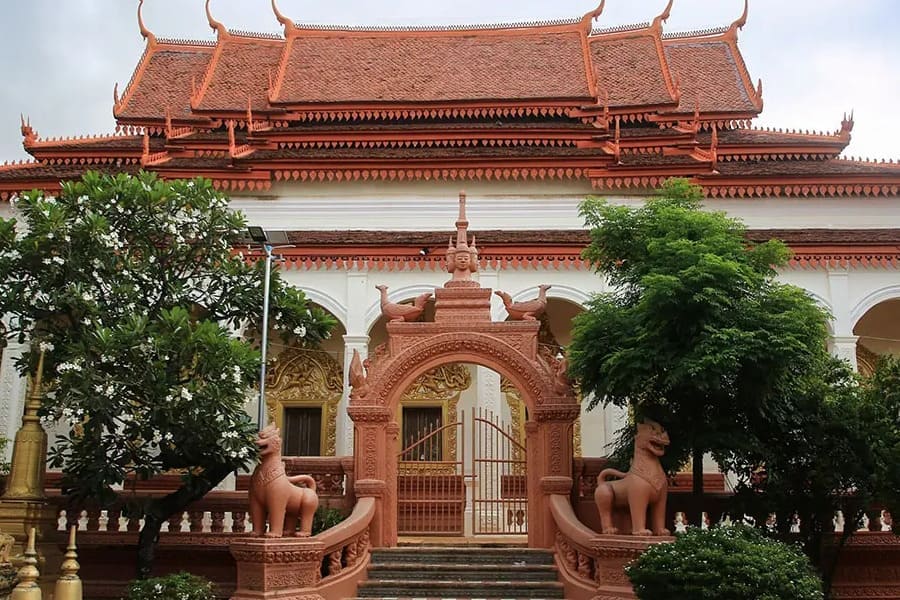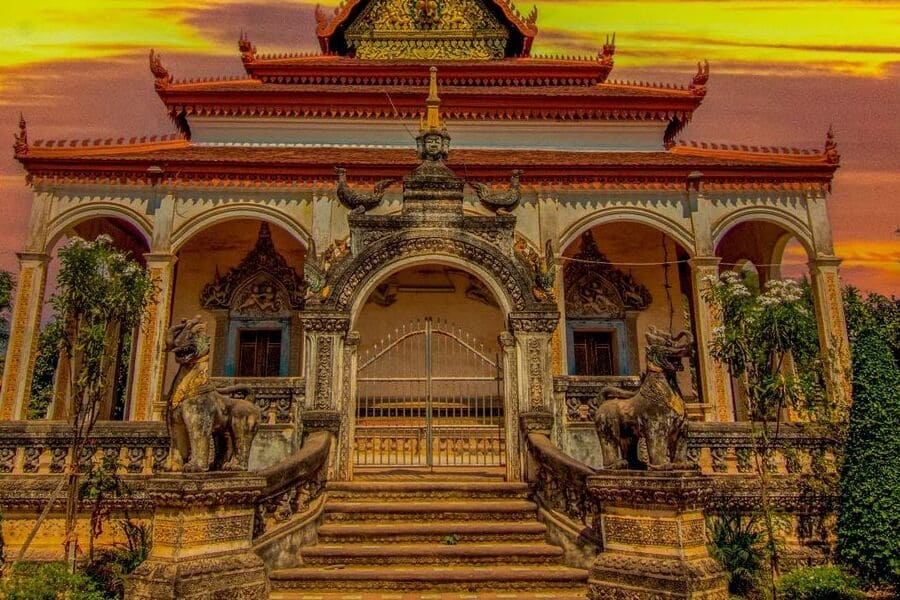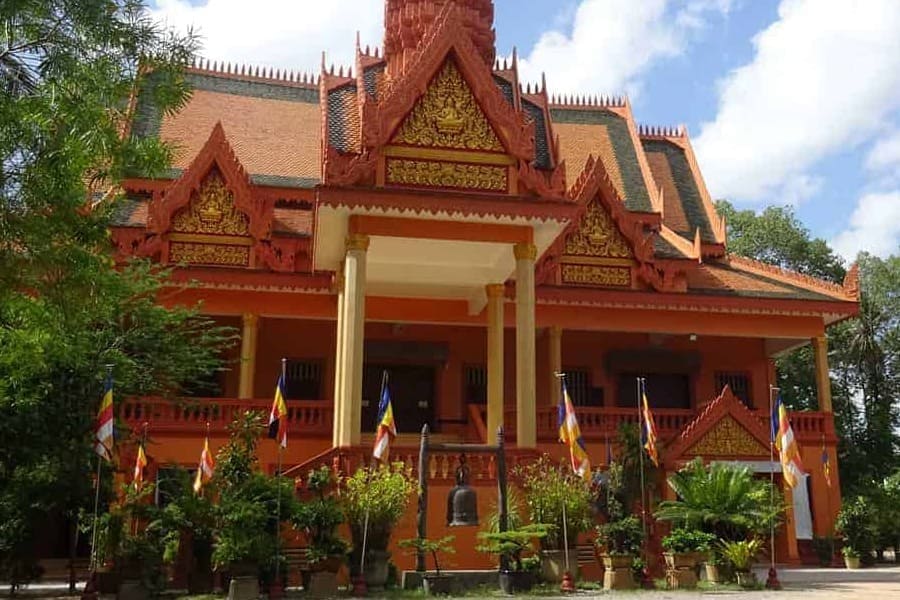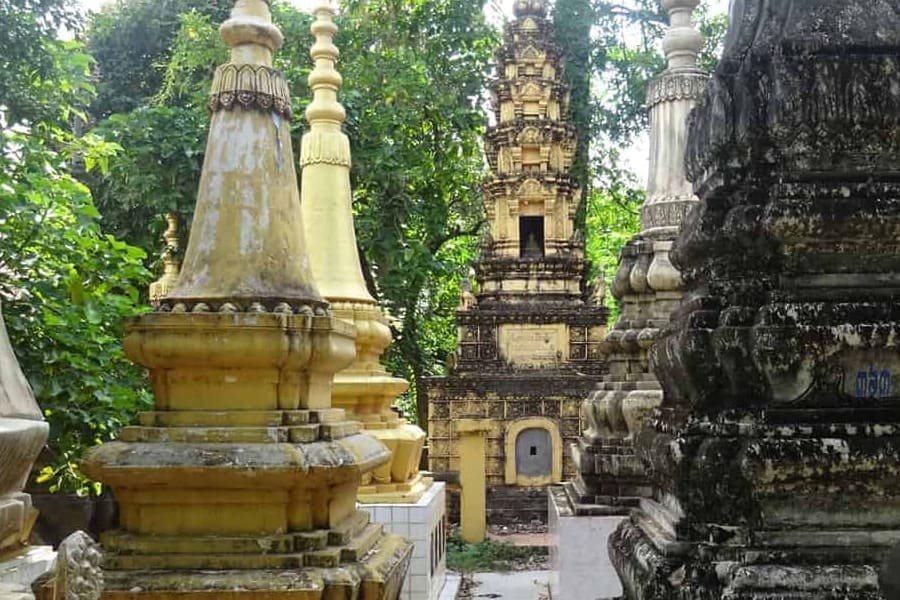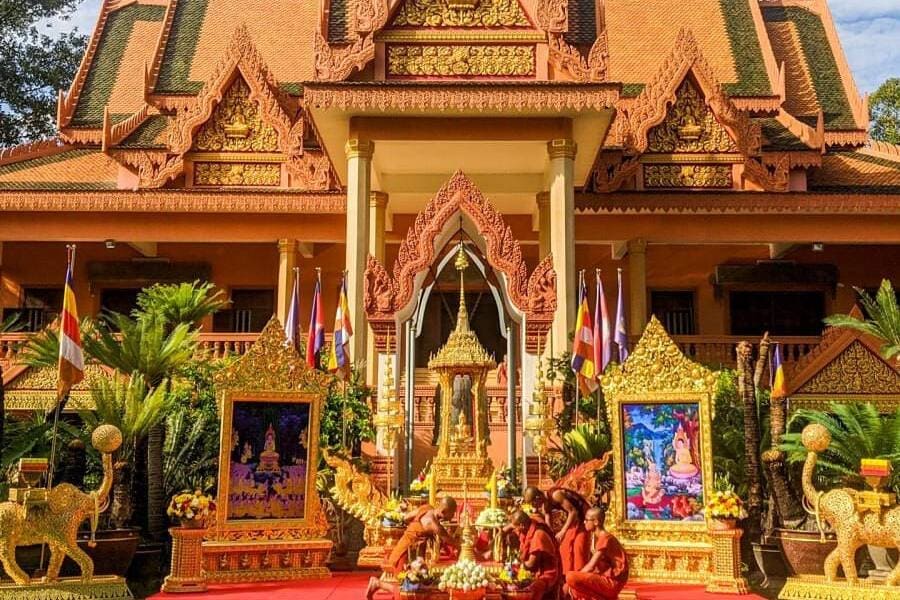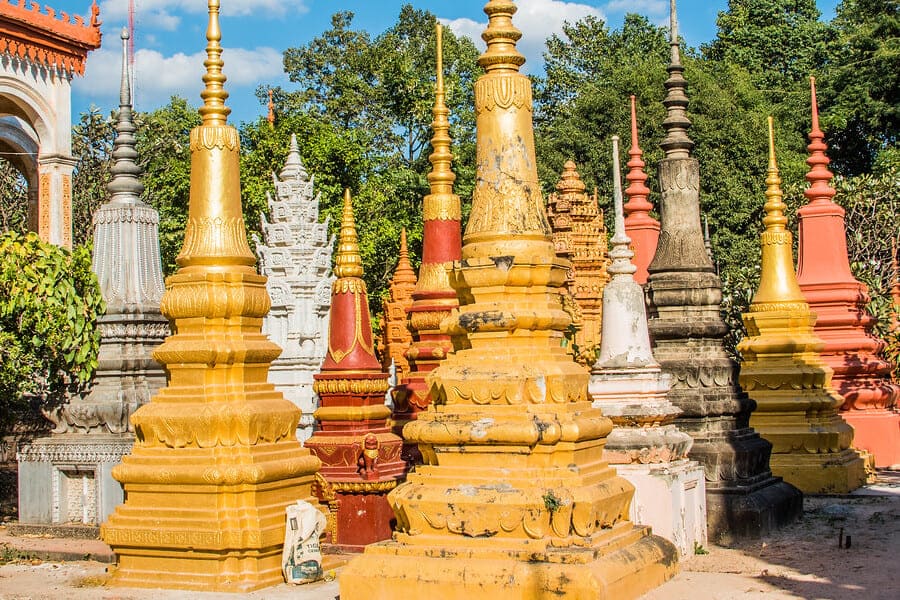Wat Bo, one of the oldest temples in Siem Reap, is a must-visit destination on any tour in Cambodia. Renowned for its stunning paintings and serene atmosphere, this historic temple offers visitors a glimpse into the spiritual and artistic heritage of the region. Exploring Wat Bo allows travelers to appreciate intricate murals and ancient architecture, making it a highlight for those seeking a deeper connection with Cambodia's rich cultural past.
Contents
An overview of Wat Bo Temple
Wat Bo Temple, situated in the heart of Siem Reap, Cambodia, stands as a timeless testament to the country's rich cultural heritage and spiritual legacy. As one of the oldest and most revered temples in the region, Wat Bo holds significant religious and cultural importance, drawing visitors from around the world to its sacred grounds.
With its origins dating back centuries, Wat Bo has served as a center for Buddhist worship and spiritual practice for generations of Cambodians. Its serene atmosphere and historical significance make it a place of pilgrimage for devout Buddhists and curious travelers alike.
The temple's architectural beauty and intricate design reflect the artistic prowess of Cambodia's ancient craftsmen. Adorned with elaborate carvings, ornate pagodas, and stunning bas-reliefs, Wat Bo is a masterpiece of Khmer architecture, showcasing the country's rich artistic tradition.
One of the most notable features of Wat Bo is its collection of beautiful paintings that adorn its walls and ceilings. These intricate artworks depict scenes from Buddhist mythology, Cambodian folklore, and historical events, offering visitors a glimpse into the cultural heritage of the region.
Beyond its religious and artistic significance, Wat Bo plays a vital role in preserving Cambodia's cultural identity. Through its rituals, ceremonies, and community activities, the temple serves as a living embodiment of Cambodian tradition, fostering a sense of connection and continuity with the country's past.
As a cherished symbol of Cambodia's spiritual and cultural heritage, Wat Bo Temple continues to inspire awe and reverence among all who visit, serving as a timeless reminder of the country's enduring legacy.
The history of Wat Bo Temple
The history of Wat Bo Temple traces back centuries, making it one of the oldest and most revered temples in Siem Reap, Cambodia. Its origins are believed to date back to the 18th century during the reign of King Ang Duong, a period marked by significant religious and architectural developments in the region.
Originally constructed as a modest Buddhist monastery, Wat Bo gradually expanded over the years, evolving into a sprawling complex encompassing multiple structures and pavilions. Its growth mirrored the rise of Buddhism as the dominant religion in Cambodia and the increasing influence of Theravada Buddhism in the country.
Throughout its history, Wat Bo has undergone several renovations and refurbishments, with each successive generation contributing to its architectural splendor and spiritual significance. The temple's layout and design reflect the traditional Khmer architectural style, characterized by intricately carved wooden structures, ornate pagodas, and elaborate bas-reliefs.
Wat Bo also played a pivotal role in preserving Cambodia's cultural heritage during times of political turmoil and social upheaval. During the Khmer Rouge regime in the 1970s, the temple served as a sanctuary for Buddhist monks and a repository for religious artifacts, safeguarding them from destruction.
In recent years, Wat Bo has emerged as a popular destination for tourists and pilgrims seeking to explore Cambodia's rich religious and cultural traditions. Its historical significance, combined with its serene atmosphere and stunning architectural features, continues to captivate visitors from around the world.
Today, Wat Bo Temple stands as a living testament to Cambodia's enduring spiritual legacy and cultural heritage, serving as a sacred site of worship, meditation, and reflection for people of all backgrounds. Its timeless beauty and historical significance make it a cherished symbol of Cambodia's past and a beacon of hope for the future.
The Architectural features of Wat Bo Temple
Wat Bo Temple is renowned for its stunning architectural features, which showcase the intricate craftsmanship and artistic mastery of Cambodia's ancient builders. Here are some of the architectural highlights of this historic temple:
- Pagodas and Towers: Wat Bo boasts several pagodas and towers adorned with elaborate carvings and decorative elements. These structures, known as prangs, serve as focal points within the temple complex and symbolize the spiritual ascent towards enlightenment.
- Bas-Reliefs: One of the most striking features of Wat Bo Temple is its extensive collection of bas-reliefs, which depict scenes from Buddhist mythology, Cambodian history, and daily life. Carved into the walls of the temple, these intricate reliefs offer insight into the cultural and religious beliefs of the Khmer people.
- Gabled Roofs: The temple's gabled roofs are adorned with intricate wooden carvings and decorative motifs, including mythical creatures, floral patterns, and celestial beings. These ornate roof structures add to the temple's grandeur and reflect traditional Khmer architectural styles.
- Wooden Pavilions: Wat Bo is home to several wooden pavilions, or viharas, used for religious ceremonies, meditation, and study. These pavilions feature intricate wooden carvings, ornate doorways, and decorative columns, creating a sense of tranquility and serenity for worshippers and visitors alike.
- Courtyards and Gardens: Surrounding the temple's main structures are lush courtyards and gardens, providing peaceful retreats for contemplation and reflection. These green spaces are often adorned with statues of Buddhist deities, lotus ponds, and flowering plants, enhancing the temple's natural beauty and spiritual ambiance.
Artistic Treasures at Wat Bo Temple
Wat Bo Temple is renowned for its rich collection of artistic treasures, including exquisite paintings and intricate carvings that adorn its walls, ceilings, and doorways. These masterpieces of Khmer artistry serve as a testament to the temple's cultural significance and historical importance.
The temple's walls are adorned with stunning paintings depicting scenes from Buddhist mythology, Cambodian folklore, and historical events. Executed with meticulous detail and vibrant colors, these paintings offer a window into the spiritual and cultural beliefs of the Khmer people. From celestial beings and mythical creatures to scenes of daily life, each artwork tells a story and invites contemplation and reflection.
In addition to its paintings, Wat Bo Temple is renowned for its intricate carvings, which can be found throughout the temple complex. Elaborate bas-reliefs decorate the walls, depicting intricate patterns, symbolic motifs, and religious iconography. These carvings showcase the skill and craftsmanship of Cambodia's ancient artisans, who painstakingly carved each detail by hand.
The temple's ceilings are also adorned with elaborate carvings and decorative elements, adding to the overall beauty and grandeur of the space. From floral patterns and geometric designs to depictions of celestial beings and mythical creatures, the ceiling carvings at Wat Bo are a sight to behold, evoking a sense of wonder and awe in visitors.
The spiritual significance of Wat Bo Temple
Wat Bo Temple holds profound spiritual significance for local worshippers and Buddhist practitioners, serving as a sacred sanctuary for religious rituals, ceremonies, and spiritual contemplation. As one of the oldest and most revered temples in Siem Reap, Cambodia, Wat Bo plays a pivotal role in fostering a deep connection to Buddhism and the spiritual heritage of the Khmer people.
For local worshippers, Wat Bo is a place of reverence and devotion, where they come to pay homage to the Buddha, offer prayers, and seek blessings for health, happiness, and prosperity. The temple's serene atmosphere and tranquil surroundings provide a peaceful retreat for meditation and reflection, allowing worshippers to find solace and inner peace amidst the chaos of daily life.
Buddhist practitioners also hold Wat Bo in high esteem, as it offers opportunities for religious study, contemplation, and practice. Monks and nuns residing at the temple lead daily rituals and ceremonies, including chanting, meditation, and offerings, which are open to the public and provide spiritual guidance and inspiration.
One of the most significant rituals held at Wat Bo is the daily almsgiving ceremony, where worshippers offer food, flowers, and other offerings to the monks as a form of merit-making and spiritual purification. This ancient tradition, known as "sangha dana," fosters a sense of community and generosity among worshippers and strengthens their bond with the monastic community.
Throughout the year, Wat Bo hosts various religious festivals and celebrations, including Buddhist holidays such as Vesak (Buddha's birthday), Pchum Ben (Ancestor's Day), and Kathina (Robe Offering Ceremony). These festivals bring together worshippers from near and far to participate in religious rituals, offer prayers, and make merit, further deepening their spiritual connection to the temple and the teachings of Buddhism.
How to get to Wat Bo Temple?
Getting to Wat Bo Temple in Siem Reap is straightforward due to its convenient location. Here are a few ways to reach the temple:
Tuk-Tuk: A tuk-tuk is a popular and convenient way to travel around Siem Reap. Simply tell the driver you want to go to Wat Bo Temple, and they will take you there. Tuk-tuks are easily available and relatively inexpensive.
Walking: If you're staying in the central area of Siem Reap, Wat Bo Temple is within walking distance. It is located east of the Old Market and Pub Street area, making for a pleasant walk if you're already exploring the city center.
Bicycle: Many hotels and guesthouses in Siem Reap offer bicycle rentals. Riding a bicycle to Wat Bo Temple can be an enjoyable way to see more of the city at your own pace. The streets leading to the temple are generally safe for cycling.
Motorbike or Scooter: Renting a motorbike or scooter is another option for getting to Wat Bo Temple. This mode of transport provides more flexibility and is relatively affordable. Just be sure to follow local traffic rules and wear a helmet.
Tips for experiencing Wat Bo Temple
- Join a Guided Tour: Opting for a guided tour of Wat Bo can provide valuable insights into the temple's history, architecture, and religious significance. Knowledgeable guides can offer in-depth explanations of the temple's artistic treasures, rituals, and ceremonies, enhancing your understanding and appreciation of this historic site.
- Respect Dress Code: As Wat Bo is a sacred place of worship, it's essential to dress modestly and respectfully. Wear clothing that covers your shoulders, arms, and knees, and remove your shoes before entering the temple buildings as a sign of reverence.
- Attend Religious Ceremonies: Participating in religious ceremonies at Wat Bo, such as chanting sessions, almsgiving rituals, or meditation sessions, offers a unique opportunity to witness Buddhist traditions in practice and connect with the local community. Check with the temple staff or local guides for information on scheduled ceremonies and etiquette guidelines for attendees.
- Explore at Quiet Times: To fully appreciate the serene atmosphere and spiritual ambiance of Wat Bo, consider visiting during quieter times of the day when there are fewer crowds. Early mornings or late afternoons tend to be less busy, allowing for a more peaceful and contemplative experience.
- Engage with Monks and Nuns: Take the opportunity to interact with the resident monks and nuns at Wat Bo, who are often happy to share their knowledge of Buddhism and answer questions about temple life and practice. Engaging in respectful conversations and offering donations or alms can deepen your understanding of Cambodian Buddhist culture.
- Respect Sacred Spaces: While exploring Wat Bo, be mindful of sacred spaces and religious artifacts, refraining from touching or disturbing them. Maintain a quiet and respectful demeanor, refraining from loud conversations or disruptive behavior out of respect for worshippers and spiritual practitioners.

